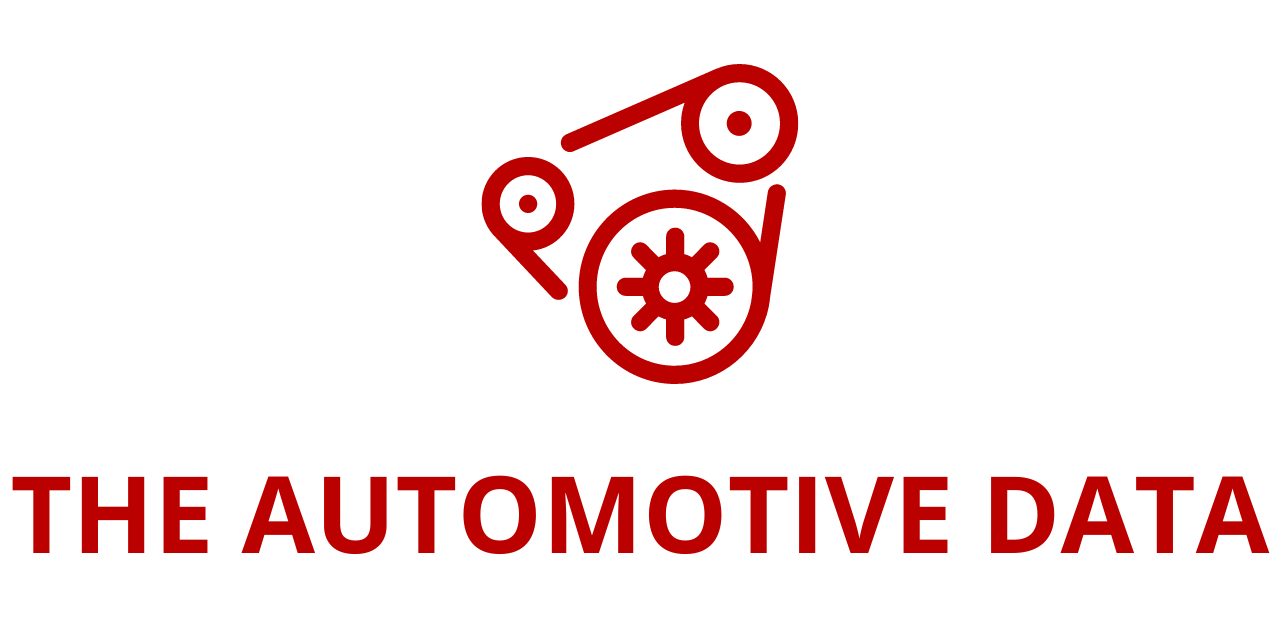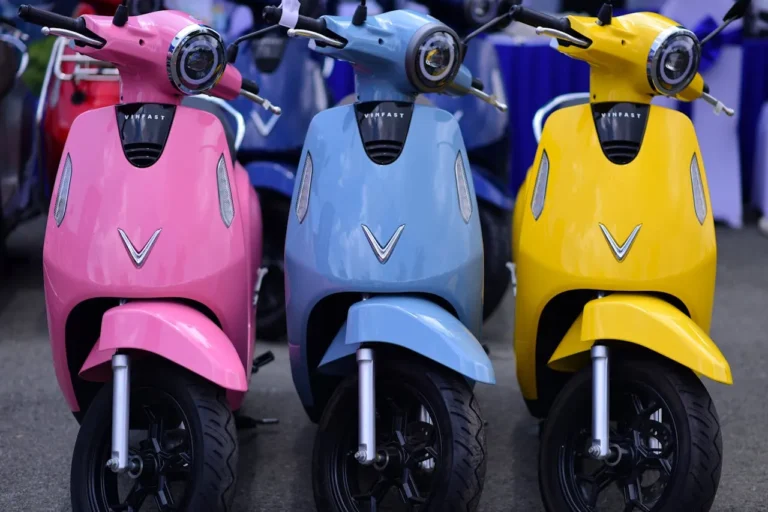
Next-Generation Automotive Computing 2026–2036: How Cars Become AI Supercomputers
The global auto industry is moving into one of the most dramatic transitions in its history. The traditional model of distributed electronic control units (ECUs) handling isolated functions is rapidly giving way to highly centralized, AI-driven computing platforms that rival small data centers in capability. The report Next-Generation Automotive Computing Market 2026–2036: ADAS, AI In-Cabin Monitoring, Centralization, and Connected Vehicles from ResearchAndMarkets.com provides a deep dive into this transformation, looking at technology, regional dynamics, and competitive strategies that will shape the next decade.
At its core, the report examines how advances in advanced driver assistance systems (ADAS), autonomous driving, in-cabin monitoring, software-defined vehicle (SDV) architectures, and connected vehicle technologies are converging to redefine vehicle development and the broader automotive value chain.
From Embedded ECUs to AI Compute Platforms
For decades, the automotive electronics landscape was built around dozens – and in many cases more than one hundred – separate ECUs, each responsible for a specific function: braking, infotainment, powertrain, safety, and so on. That architecture is no longer sustainable in a world of continuous software updates, high-bandwidth sensors, and AI-heavy workloads.
The report identifies the current period as a critical inflection point: automotive computing is evolving into powerful AI platforms designed to handle perception, planning, connectivity, security, and user experience from a central brain. Compute requirements span from around 30 TOPS for basic Level 2 driving functions to nearly 1,000 TOPS and beyond for higher levels of autonomy and complex perception stacks.
This shift is not just technical; it is strategic. It directly affects semiconductor demand, OEM business models, Tier-1 supplier roles, and how software is developed, deployed, and monetized across a vehicle’s life.
ADAS and Autonomous Driving: Sensor-Heavy, Compute-Intensive
A major section of the report focuses on ADAS and autonomous driving across SAE Levels 0–5. It breaks down how sensor suites and compute platforms are being architected and deployed by region, and how regulatory and commercial realities differ across markets.
Sensor Suites and Fusion Architectures
The study analyzes:
- Camera-based perception systems for lane keeping, traffic sign recognition, and object detection
- Radar systems evolving from simple short-range units to highly capable 4D imaging radar
- LiDAR technologies moving toward lower-cost, automotive-grade solid-state designs
- Sensor fusion approaches, including early, late, and mid-level fusion, and the emerging trend toward end-to-end neural networks that process raw sensor data directly
The evolution from modular pipelines (separate perception, fusion, planning blocks) to more integrated AI architectures is highlighted, with implications for compute load, redundancy, and system safety.
Regional ADAS and Autonomy Trends
The report underscores distinct geographic patterns:
- China is racing ahead in Level 2 and “L2++” deployments, especially urban Navigation on Autopilot (NOA) solutions. Domestic brands are aggressively integrating advanced compute and sensor stacks to differentiate in a highly competitive market.
- Europe is heavily shaped by regulation. EU General Safety Regulation and evolving Euro NCAP protocols are pushing mandatory fitment of features such as Automatic Emergency Braking (AEB), lane-keeping, and Driver Monitoring Systems (DMS) in the 2024–2025 timeframe.
- North America focuses on profitable Level 2 and early Level 3 highway applications. While adoption may be slower in volume than China, per-vehicle content can be high as customers pay for premium ADAS packages and feature upgrades.
Across all regions, the move from basic assistance to more automated driving is a key driver of higher compute density and richer onboard sensor configurations.
In-Cabin Monitoring: From Compliance to Experience Engine
In-cabin monitoring is emerging as one of the fastest-growing segments in next-gen automotive computing, driven by both safety regulations and new user-experience expectations.
Driver and Occupant Monitoring Systems
The report tracks the evolution of:
- Driver Monitoring Systems (DMS): Moving from crude steering-torque-based drowsiness detection to camera-based eye and gaze tracking, head pose estimation, distraction detection, and cognitive load analysis.
- Occupant Monitoring Systems (OMS): Expanding from simple seat-occupancy detection to full-cabin monitoring that can identify passengers, track posture, detect child presence, and enable adaptive climate, audio, and safety responses.
Technologies analyzed include:
- Near-infrared (NIR) cameras supporting low-light performance
- Visible-light camera systems
- Time-of-Flight (ToF) depth sensors
- Radar-based monitoring solutions
- Multi-modal approaches combining cameras, radar, and other sensors
The report outlines how regulatory mandates – such as EU GSR and China GB standards – are accelerating adoption, and how autonomous driving further increases the need to monitor engagement and safety in semi- or fully automated modes.
Software-Defined Vehicles and Centralized Architectures
One of the most transformative themes in the report is the rise of software-defined vehicles (SDVs). Instead of each function being bound to a dedicated ECU, SDVs are built on centralized compute platforms and zone controllers connected via high-speed automotive Ethernet.
From 100 ECUs to Zone Controllers and Central Brains
The report’s SDV maturity model (Levels 0–4) benchmarks major automakers—Tesla, BYD, XPeng, Nio, Mercedes-Benz, BMW, Volkswagen, and others—on four key dimensions:
- Degree of compute centralization
- Breadth and sophistication of over-the-air (OTA) update capabilities
- Adoption of service-oriented architectures (SOA) and standardized middleware
- Monetization strategies for software and digital services
Market sizing includes:
- Central compute platforms and domain/zone controllers
- Ethernet-based network infrastructure
- Hypervisors and containerization technologies to isolate and manage functions
- Connected services, projected to generate tens of billions of dollars in recurring revenue annually by around 2035
The report argues that SDV maturity will increasingly determine competitive success, affecting speed of innovation, cost structures, and the ability to deliver new features post-sale.
Sensors and V2X: The Connected, Cooperative Vehicle
Beyond onboard perception, the report examines how vehicles connect and cooperate with each other and their surroundings.
LiDAR, Radar, and Cameras
The study provides an in-depth comparison of LiDAR technologies (MEMS scanning, solid-state flash LiDAR, FMCW concepts), radar evolution from basic units to 4D imaging radar, and the ubiquity of camera systems. Cost curves, performance metrics, and integration challenges are all addressed.
Particular attention is paid to the competitive landscape in LiDAR:
- Chinese players such as Hesai, RoboSense, Livox, and Seyond are highlighted as gaining a strong global foothold, capturing an estimated majority share of the LiDAR market through aggressive pricing and deep alignment with domestic OEMs.
- Western LiDAR manufacturers are analyzed in terms of technology differentiation, partnerships, and scalability.
Connected Vehicle and V2X
The report also covers:
- Adoption of C-V2X chipsets for vehicle-to-vehicle (V2V), vehicle-to-infrastructure (V2I), and vehicle-to-network (V2N) communications
- Infrastructure rollout, including deployment of roadside units in major markets
- Use cases such as cooperative maneuvers, intersection management, and cloud-enhanced perception
These technologies underpin a future in which vehicles not only sense locally but also share and receive information to improve safety, efficiency, and autonomous performance.
Computing Platforms and the Battle for the Automotive Brain
A central part of the report is devoted to competition among semiconductor and computing platform providers.
Nvidia: High-End Performance and Full-Stack Strategy
Nvidia is positioned as the leader for high-performance autonomous driving compute:
- The Nvidia Drive Orin SoC (around 254 TOPS) is widely adopted for Level 2/3 systems.
- The upcoming Drive Thor platform, targeting roughly an order of magnitude higher performance, is aimed at Level 4-capable architectures and multifunction central compute roles.
Nvidia’s strength lies not only in raw hardware performance but also in its extensive software ecosystem: CUDA, AI frameworks, simulation platforms such as Omniverse, and perception and planning libraries that shorten OEM development cycles.
Qualcomm: Cost-Effective, Connectivity-Centric Challenger
Qualcomm is profiled as a strong competitor in mid-tier segments with its Snapdragon Ride platforms:
- Solutions like SA8295P (around 30 TOPS) are integrated into vehicles from BMW, GM, Stellantis, Renault, and others.
- Qualcomm leverages deep expertise in connectivity (5G, V2X, Wi-Fi) to offer highly integrated platforms.
Its strategy emphasizes power efficiency and cost-effectiveness, targeting mass-market Level 2/2+ deployments where peak performance is less critical than energy consumption and bill-of-materials cost.
Mobileye: Vertical Integration with Massive Installed Base
Mobileye, still closely tied to Intel, pursues an integrated model:
- EyeQ6 and future EyeQ Ultra chips support a range of ADAS and automated driving functions from basic Level 2 up to Level 3.
- Mobileye pairs its hardware with proprietary perception software and REM crowd-sourced mapping, building on an installed base exceeding 100 million vehicles.
This tight integration provides data advantages for training AI models and updating maps, though some OEMs may chafe at the relatively closed ecosystem and seek more software control.
Chinese Compute Vendors and Geopolitical Shifts
The report also emphasizes the growing role of Chinese compute suppliers such as Horizon Robotics, whose Journey series powers models from XPeng, Li Auto, SAIC, and others. Export controls on advanced AI chips from the U.S. are accelerating domestic solutions, contributing to regional fragmentation in the supply chain and potentially creating divergent, incompatible ecosystems.
OEM Custom Silicon and Vertical Integration
Tesla’s Full Self-Driving (FSD) computer, built around custom neural network accelerators, is used as a prominent example of vertically integrated hardware–software co-design. Tesla’s approach demonstrates how aligning chip design with specific AI workloads can yield performance and cost advantages.
Similar trends are noted at other OEMs and mobility players, including GM’s Cruise, as well as semi-custom collaborations such as Mercedes-Benz’s work with Nvidia. Over time, more large automakers may pursue custom or semi-custom silicon to differentiate performance, optimize costs, and reduce dependence on single suppliers.
Market Forecasts and Strategic Intelligence
Beyond the technology deep dives, the report includes extensive quantitative and strategic analysis covering 2024–2036:
- Global vehicle sales broken down by autonomy level
- ADAS feature adoption by region (adaptive cruise control, lane keeping, AEB, automated parking, etc.)
- Volumes and revenues for cameras, radar, LiDAR, and ultrasonic sensors
- Shipments of automotive processors and implications for wafer production
- Penetration of in-cabin monitoring systems and their technology mix
- Forecasts for LiDAR-equipped vehicles across passenger cars and robotaxis
- Revenue projections for central compute platforms, zone controllers, OTA software, and subscription services
- Connected vehicle and V2X chipset market outlook
The report complements the quantitative data with strategic business intelligence on:
- Liability frameworks for different autonomy levels in various jurisdictions
- Subscription and feature-on-demand models, including pay-to-unlock and pay-per-use services
- Fleet learning, data monetization, and digital twin applications
- Generative AI in the vehicle cabin (intelligent assistants, natural interaction), and in engineering workflows (simulation, design, validation)
- Funding and deployment challenges for V2X and autonomous infrastructure
Competitive Landscape and Companies Covered
To round out the picture, the report profiles around 300 companies across the ecosystem, including:
- Global OEMs and emerging automakers
- Tier-1 suppliers specializing in ADAS, sensing, and cockpit electronics
- Semiconductor vendors, cloud and software providers, and specialist LiDAR/radar/camera innovators
- Platforms and middleware companies enabling SDV architectures and OTA strategies
Among the many names referenced are Nvidia, Qualcomm, Mobileye, Tesla, Bosch, Continental, Valeo, Huawei, Horizon Robotics, Hesai, RoboSense, Luminar, Sony, Intel, AMD, NXP, STMicroelectronics, OpenAI, leading cloud providers, and major automakers from North America, Europe, Japan, Korea, and China.
Source Link:https://www.businesswire.com/







